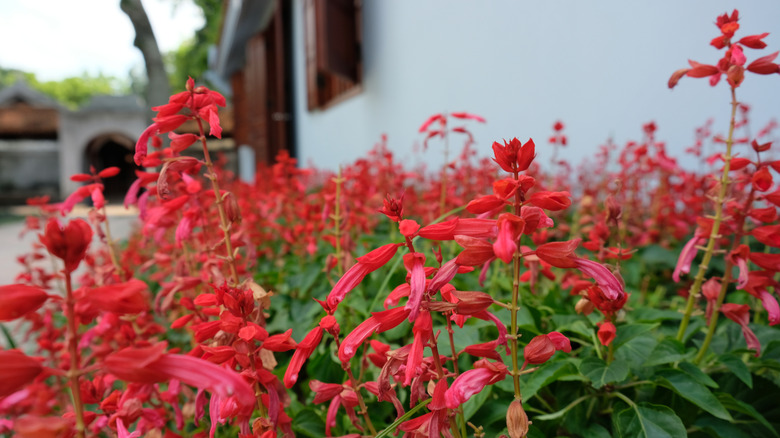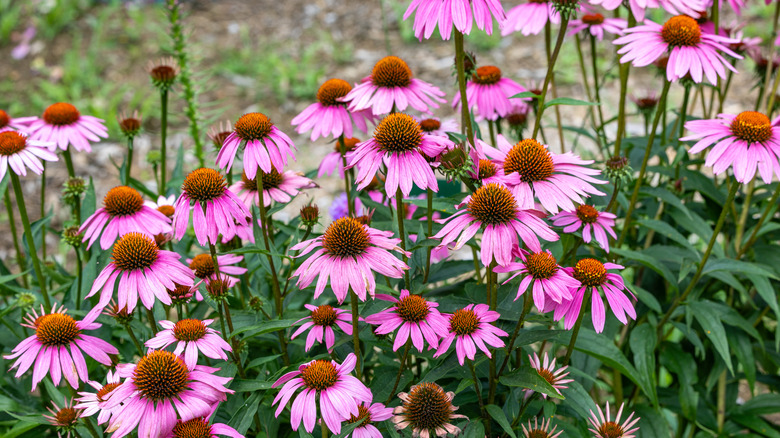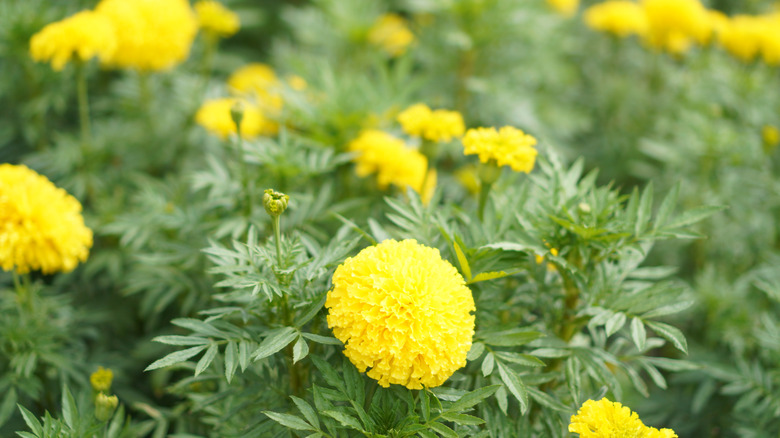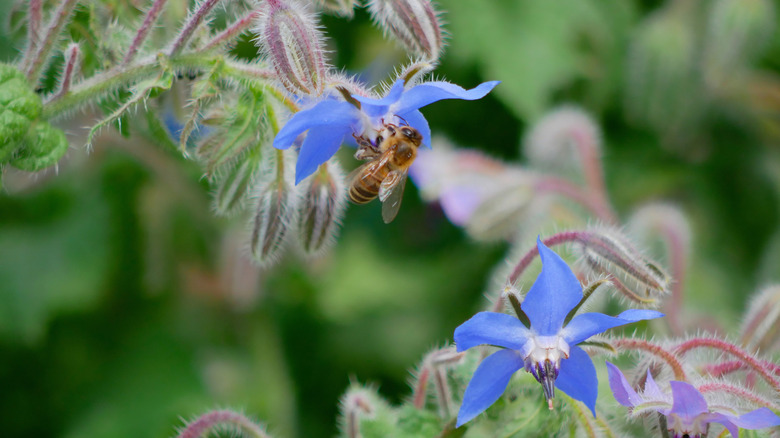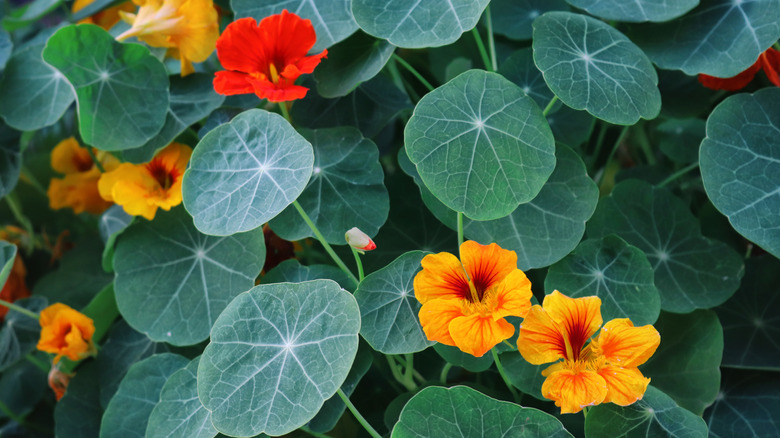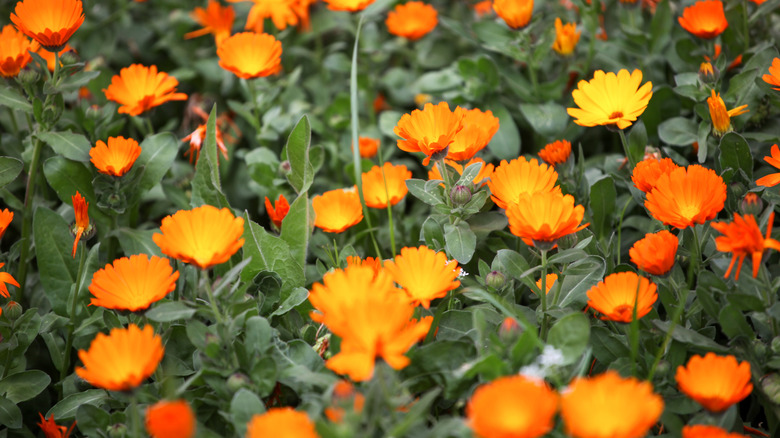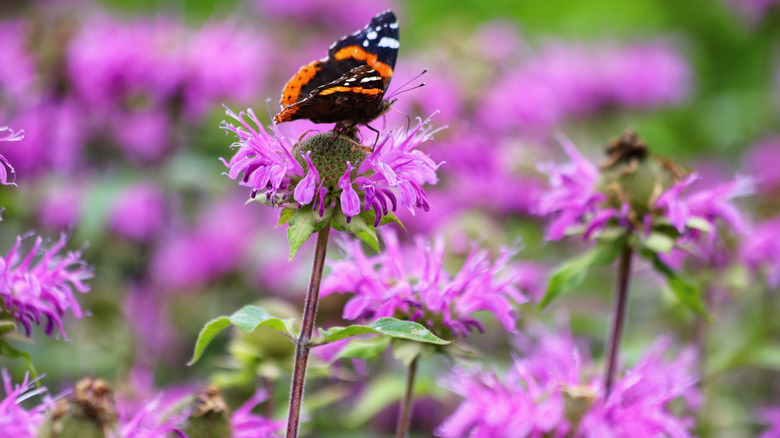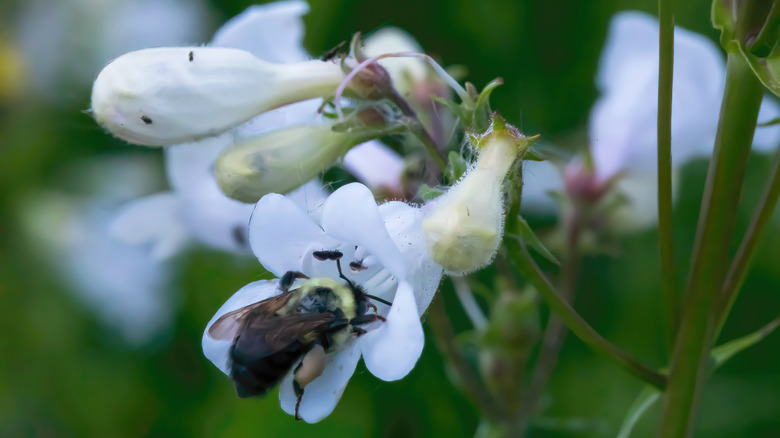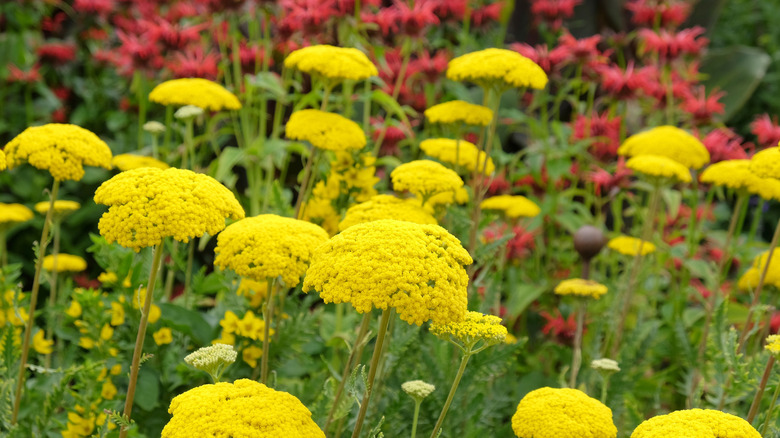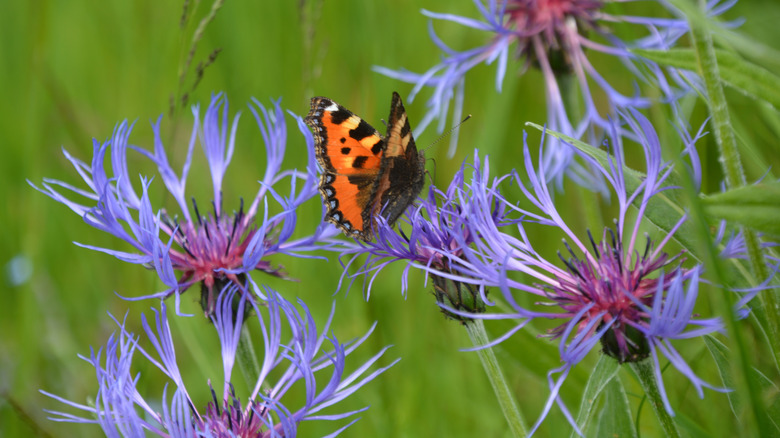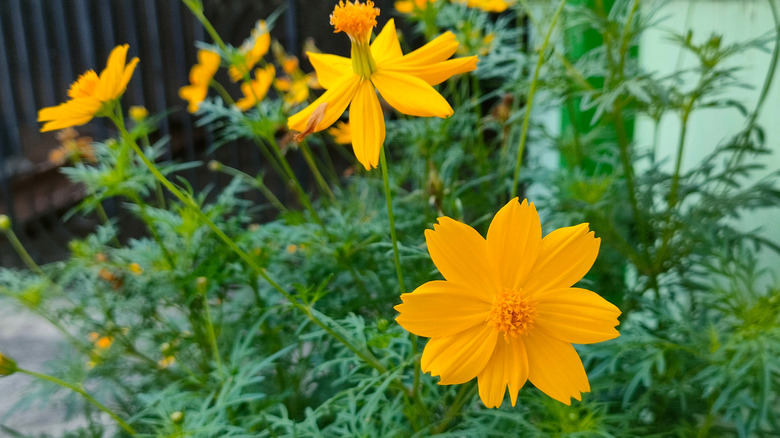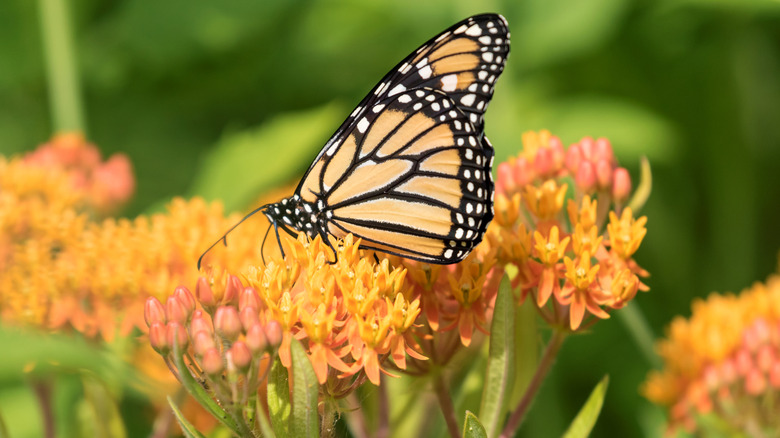Pineapple Sage Attracts Even More Pollinators When Paired With These 11 Garden Favorites
If you adore the aroma of a freshly cut pineapple, you can mimic this delicious scent in your garden by planting pineapple sage (Salvia elegans). This attractive herbaceous perennial in the mint family has leaves that give off a fruity fragrance when they're crushed. It also has lovely red tubular flowers on tall spikes that will attract pollinators and even hummingbirds to your garden. Pineapple sage is hardy in USDA zones 8 through 10, but can be grown as an annual in other regions. This makes it a valuable addition to your pollinator garden. But, if you want to attract even more bees and butterflies, why not pair it with other garden favorites that like similar conditions and are equally adored by beneficial garden visitors?
To choose plants that enjoy the same growing conditions, it's handy to know that pineapple sage prefers to grow in full sun, and also appreciates moist soil that is well-drained. Companion plants that will thrive in the same type of environment and also attract a variety of different pollinators include coneflower, marigolds, borage, nasturtium, and calendula.
Coneflower
Who doesn't love the whimsical blooms of coneflower (Echinacea angustifolia), with their downward growing petals and upright central cones? This perennial is hardy in USDA zones 3 through 8, and apart from attracting native bees and butterflies, this plant is also a larval host for the wavy lined emerald moth. While deadheading the spent flowers is recommended to promote more blooms, if you allow a few of them to freely seed, they will also attract songbirds to your pollinator garden.
African marigold
African marigolds (Tagetes erecta) are popular annuals for a pollinator garden. This pretty plant has yellow and orange blooms, and is hardy in zones 2 through 11. Its fragrant flowers are a magnet for butterflies of all shapes and sizes. Just take care when deadheading the spent blooms because the sap can cause severe skin irritation in some people, while the scent of the flowers can cause eye and nose irritation as well.
Borage
You probably know that borage (Borago officinalis) makes an excellent addition to a vegetable garden, but it can also be useful to add to your pollinator patch alongside pineapple sage. It grows in zones 2 through 11, and loves the sun as well as good drainage. The pretty blue flowers are loved by bees and other pollinators, and the blooms are edible, although the leaves do contain tannins that can cause poisoning in humans and pets.
Nasturtium
If you want an explosion of color around your pineapple sage, nasturtiums (Tropaeolum majus) will be happy to comply. Their bright yellow and orange blooms will cover the plant, which grows in zones 2 through 11. These plants are easy to grow, and the cheery blooms will attract all kinds of pollinators, including bees, butterflies, and even hummingbirds. Better still, the flowers are edible with a slightly spicy flavor, and look amazing when added to summer salads.
Calendula
Also known as pot marigold, Calendula officinalis is another plant that will pair perfectly with pineapple sage. This pretty annual sports bright orange or yellow blooms, but you can also get cultivars with red flowers. It's a gorgeous variety of calendula that is perfect for filling gaps in your garden. It grows well in zones 2 through 11, and the pretty flowers will attract butterflies and other pollinators. They're also edible, and if you deadhead the flowers, you'll encourage further blooming.
Bee balm
You can expect some outstanding color in your pollinator garden when you add bee balm (Monarda didyma) alongside your pineapple sage. This eye-catching herbaceous perennial is native to the eastern North American mountains and thrives in zones 4 through 9. Once planted, you'll be stunned at the amount of insect life these blooms attract. They're a magnet for bees, butterflies, and hummingbirds. You might even be interested to learn that this is one of the best fragrant plants to include in your patio container garden.
White beardtongue
To add a little contrast in your garden, you might want to consider white beardtongue (Penstemon digitalis), which is a clump-forming perennial suitable for zones 3 through 8. The two-lipped tubular flowers will attract bees, butterflies, and hummingbirds to your yard. In fact, it's one of those flowers that will transform your space into a hummingbird heaven. As a bonus, this pretty plant will also lure in a variety of songbirds.
Fernleaf yarrow
While common yarrow is considered invasive in many parts of the U.S., the related species of fernleaf yarrow (Achillea filipendulina) is not on any invasive plant lists. The flat-topped yellow flower clusters will lure in plenty of pollinators and can be cut and dried. Fernleaf yarrow grows in zones 3 through 9 and will happily thrive in conditions similar to pineapple sage. If you deadhead the spent blooms regularly, you'll be rewarded with flowers all summer long.
Perennial cornflower
If you love pretty cornflower blooms, you might want to consider adding this perennial cornflower (Centaurea montana), as it's not considered to be invasive in the United States. It will grow in zones 3 through 8, and has the prettiest rich blue frilled flowers with reddish-blue centers. These will bring both bees and butterflies to your yard. As this species is a little lower growing, only reaching a maximum height of 2 feet, it would be perfect as a border plant around your other taller-growing species, like pineapple sage, which grows to a height of 5 feet.
Sulphur cosmos
You can fill your garden space with pops of yellow and orange if you grow sulphur cosmos (Cosmos sulphureus) alongside your red-flowering pineapple sage. This attractive annual thrives in zones 2 through 11 and will turn your yard into a butterfly haven. It grows quickly, forming a nice 3 foot wide clump with masses of daisy-like blooms from spring right through into fall. As a bonus, if you let the dry seeds fall onto the soil, they'll germinate and you'll have a lot of new plants to fill your entire patch.
Butterfly milkweed
No pollinator garden would be complete without some butterfly milkweed (Asclepias tuberosa). This tuberous, native perennial grows in zones 3 through 9, and is a larval host for the monarch butterfly. On top of that, the beautiful clusters of bright orange flowers will attract a variety of other butterflies, pollinators, and even hummingbirds. Just keep in mind that the plant is mildly toxic to humans and is also poisonous to pets, so keep your dogs, cats, and children away from it.
